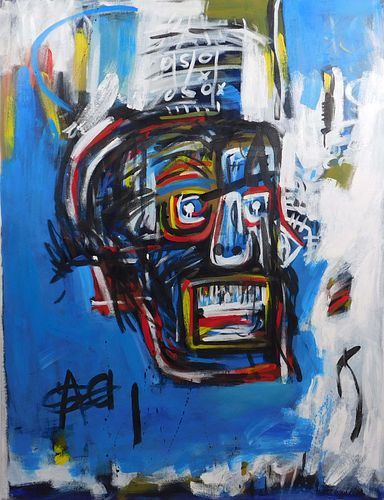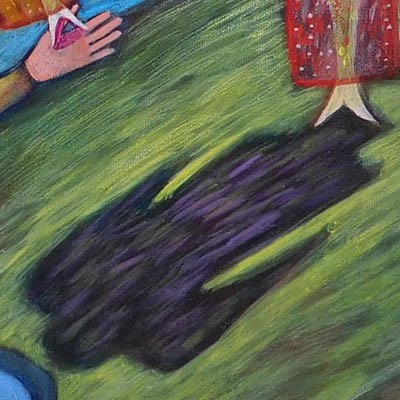After Jean-Michel Basquiat: Cabeza
Lot 264
Categories
About Auction
By 500 Gallery
Nov 16, 2023 - Nov 24, 2023
Set Reminder
2023-11-16 13:00:00
2023-11-24 10:00:00
America/New_York
Bidsquare
Bidsquare : Black Friday: Fall Discovery Sale Timed Sale
https://www.bidsquare.com/auctions/500-gallery/black-friday-fall-discovery-sale-timed-sale-14263
A lively selection of antique and modern fine and decorative art by major and under appreciated artists. New-to-the-market pieces from private collections are presented along with hundreds of artworks from our extensive storerooms. 500 Gallery info@500gallery.com
A lively selection of antique and modern fine and decorative art by major and under appreciated artists. New-to-the-market pieces from private collections are presented along with hundreds of artworks from our extensive storerooms. 500 Gallery info@500gallery.com
- Lot Description
Jean-Michel Basquiat (American, 1960-1988) After: Cabeza, 1981. Oil on canvas, unframed.
Basquiat first achieved fame as part of SAMO, an informal graffiti duo who wrote enigmatic epigrams in the cultural hotbed of the Lower East Side of Manhattan during the late 1970s where the hip hop, punk, and street art movements had coalesced. Basquiat is considered a contributor to the neo-expressionist movement, a late-modernist style of art characterized by intense subjectivity and rough handling of materials. Basquiat used his paintings as a means of social commentary/criticism, often making attacks on power structures and systems of racism and focusing on dichotomies like wealth vs. poverty, integration vs. segregation and inner vs. outer experience.
40.5 x 30.75 inches canvas.
Private collection, UK.
Jean-Michel Basquiat (American, 1960-1988) After: Cabeza, 1981. Oil on canvas, unframed.Condition
Basquiat first achieved fame as part of SAMO, an informal graffiti duo who wrote enigmatic epigrams in the cultural hotbed of the Lower East Side of Manhattan during the late 1970s where the hip hop, punk, and street art movements had coalesced. Basquiat is considered a contributor to the neo-expressionist movement, a late-modernist style of art characterized by intense subjectivity and rough handling of materials. Basquiat used his paintings as a means of social commentary/criticism, often making attacks on power structures and systems of racism and focusing on dichotomies like wealth vs. poverty, integration vs. segregation and inner vs. outer experience.
40.5 x 30.75 inches canvas.
Private collection, UK.
- Shipping Info
-
500 Gallery offers in-house shipping for most items. Shipping cost will be listed on your invoice. Please inquire ahead of the auction if you're unsure as to potential shipping costs or to retrieve a shipping estimate/quote.
-
- Payment & Auction Policies
-
Available payment options
-
-
- Buyer's Premium



 EUR
EUR CAD
CAD AUD
AUD GBP
GBP MXN
MXN HKD
HKD CNY
CNY MYR
MYR SEK
SEK SGD
SGD CHF
CHF THB
THB





























